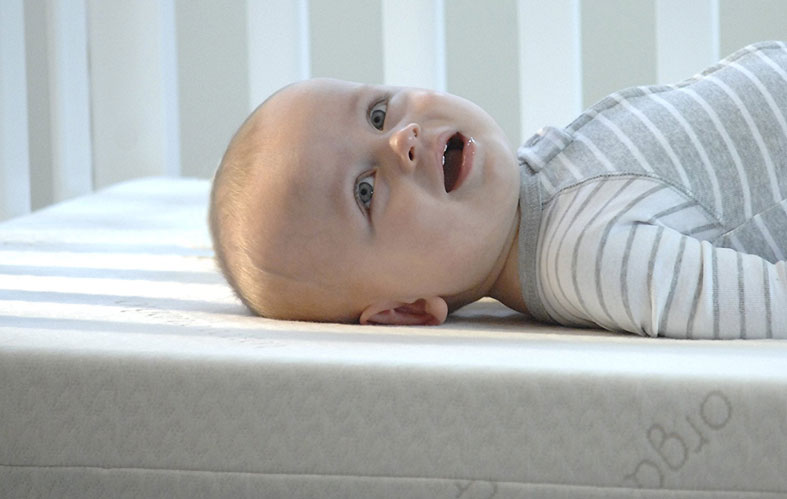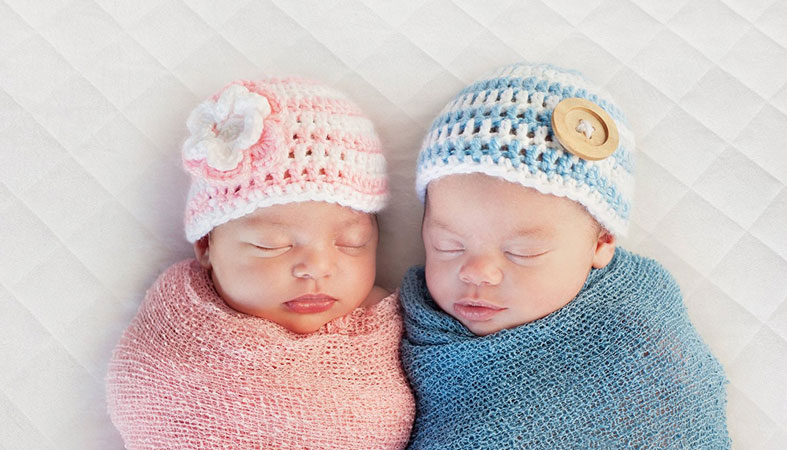As adults, we put a lot of emphasis on our own mattresses. We spend a lot of time evaluating comfort, durability, firmness, and cooling. And, of course, we want the best quality at a reasonable price.
The consideration we put into our child’s mattress, especially for a crib, should be even more thorough. After all, it’s not just about comfort for your baby or toddler (though that’s important, too!); safety is also a top priority.
When you’re looking to get a new bed for your bundle of joy, you’ll naturally also wonder how long it will last, if you can use it down the road if you have another child, and even if you can accept a hand-me-down from a well-meaning friend or family member.
In this article, we’ll discuss how long crib mattresses last and address the above inquiries, too!
Baby Beds Lifespan Factors
Type
The lifespan of your baby’s mattress will depend heavily on what type it is, meaning is it memory foam or an innerspring? Memory foam tends to be less able to stand the test of time, especially if it’s low density. A foam that has a lower density loses its shape and supporting capabilities more quickly, causing indentations. An indentation can be life-threatening to an infant because it poses a suffocation risk.
Innerspring coil construction tends to last longer, whether it’s an adult or crib bed, but you should pay careful attention to the coils. Sometimes they poke through over time. When this happens, it’s time to discard it.
Want to know more? Check out our top rated crib mattresses here.
Durability
Something else to consider when you purchase a crib mattress is the type of cover it’s made of. The material and construction are top indicators of how durable the bed will be. A thin cover, especially vinyl, will lose integrity over time. Look for something ticker made from a strong material, like nylon.
Waterproof Capacity
Accidents happen. A lot. Whether it’s urine, a blowout, blood, vomit spit up or drool, if any of these get to the mattress itself, it’s going to dramatically shorten the lifespan. Liquid that soaks in can cause mold, mildew and harmful bacteria to fester and grow. Plus, stains will void your warranty.
A waterproof mattress has a significantly longer life than a non-waterproof one. If yours isn’t, get a protector or separate pad to provide a barrier to prevent liquids from seeping in.
View Our Guide: Best Waterproof Crib Mattress Pad

Stain Resistance
As we mentioned, a stain will void your warranty, so having something that resists discoloration is ideal for extending its life. Some are pre-treated to fight stains. If yours isn’t, you’ll need to be extra diligent in using a cover that’s waterproof, and you may have to clean the mattress more frequently.
Care and Maintenance
Being proactive in this department will help your crib mattress last longer. The three best things you can do are:
- Clean up any accidents as soon as they occur. Don’t let them sit and soak into the bed.
- Invest in a protective cover to prevent any liquids from spills or accidents for seeping through.
- Inspect and clean your mattress regularly to prevent the buildup of any unwanted materials or critters (like dust mites).
By following these three easy steps, you can help ensure that your bed lasts for years.
Get More Info: How To Remove Stains from Mattress
Storage
If you want to use it for a second child or you’re thinking of giving it away for someone else to use, proper storage is important. Keep the bed away from moist environments. Also avoid direct heat and sunlight, as they will degrade the structural integrity of the material. Ideally, store it in either a plastic wrap or its original box in a dry, temperature regulated environment.
Is it Still Safe to Use?
Firmness
The bed should still feel firm, otherwise it’s not safe to use. This rule is especially true for infants. A too-soft surface means they can get enveloped into it too deeply and not be able to move. This increases the risk of Sudden Infant Death Syndrome (SIDS).
A toddler bed doesn’t need to be quite so firm but should still feel supportive. Often cot mattresses are dual-sided, with a firm side for infants and a softer underside with memory foam for toddlers. Check for a noticeable firmness level between the two sides.
Indentation
If this bed is for an infant, there must be no indentations. If you notice peaks and valleys, or you sink deeply when you apply pressure to a certain part of the mattress, it’s time for a new one. Again, indentations are problematic for babies that can’t move and roll on their own. They present a high suffocation risk.

Loose Threads
Check for any loose threads. If baby pulls on them or puts them in their mouth, they can be a hazard for choking. They’ll also continue to unravel, which can cause exposure to filling or other materials, also a danger for chocking. Errant threads are also an indicator that the mattress is past its useful life.
Harmful Pathogens
If a bed is older or hasn’t been cared for according to instructions, there’s a higher risk that harmful pathogens are lurking inside. These include bacteria, mold, mildew, and fungus. Having these present increases the risk for babies and toddlers to experience respiratory problems, including allergies and asthma. There’s even a potentially higher risk for SIDS due to the breathing difficulties.
Tips to Make a Cot Bed Last Longer
To get the most life out your crib, proactive care and maintenance are your best friends (second only to nap time).
Here are our top tips to make the bed last as long as possible:
- Regular cleanings – wash the cover periodically and when accidents occur with mild detergents (if removable)
- Use antibacterial sprays – for PVC covers, disinfect with anti-bacterial spray
- Vacuum your mattress monthly
- Spot clean with a soapy sponge when you see any stains
- Turn or flip it regularly to distribute wear evenly
- Make sure you always dry it thoroughly before putting sheets, covers or baby on it.
Frequently Asked Questions
Would you recommend buying a used mattress?
Generally, this is not recommended. Encountering a used bed that’s free of stains isn’t likely to happen, and if you see a stain on a mattress, you should avoid using it for your baby. Even if you don’t see any stains, there could still be things lurking underneath that you can’t detect. Since you weren’t the original owner, you have no idea what kind of adventurous life this bed led before meeting you.
Should you buy a new mattress for your second baby?
The answer to this depends on how you cared for it with your first child and how long you used it. If it was well taken care of, and you the baby switched to a new bed within the first three to five years, it probably has some life left in it.
On the other hand, if your first child had a lot of accidents that weren’t cleaned immediately, and they were spent a lot of time jumping and bouncing on the surface, it might be time for something new.
Conclusion
As you can see, a baby mattresses lifespan depends on a wide variety of factors. The good news is that you as a parent can control a lot of them. Most are designed to last about five years, though some say longer. Keep the five-year rule in mind and decrease if the bed lived a hard life, and increase it if you’ve been proactive with care.
More Reading:
- 8 Baby Sleep Facts Every Parent Should Know [Infographic]
- How to Get Your Newborn Child to Sleep in a Crib at Night
Sources:
- Crib Safety Tips – cpsc.gov
- Crib Mattress Emissions – cockrell.utexas.edu

Julia Forbes
Lead Product Tester
About Author
Julia is the Lead Reviewer at Sleep Advisor, specializing in testing out mattresses and sleep accessories – she’s in the right line of work, because she loves to sleep.
Stomach Sleeper
